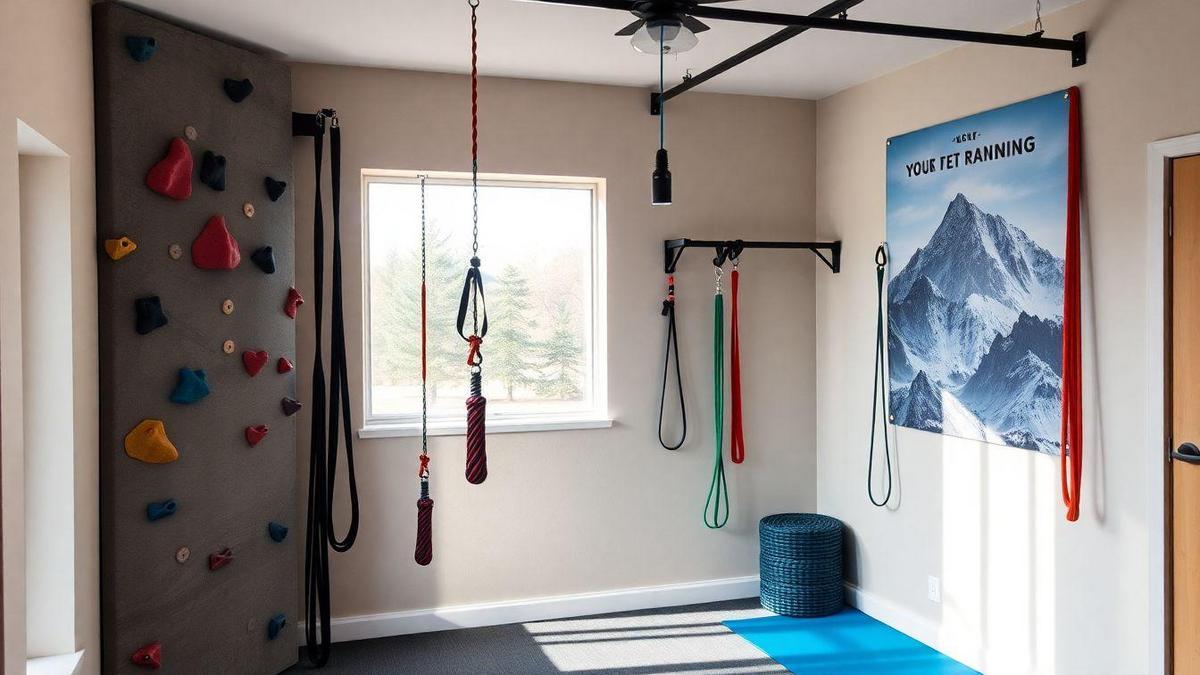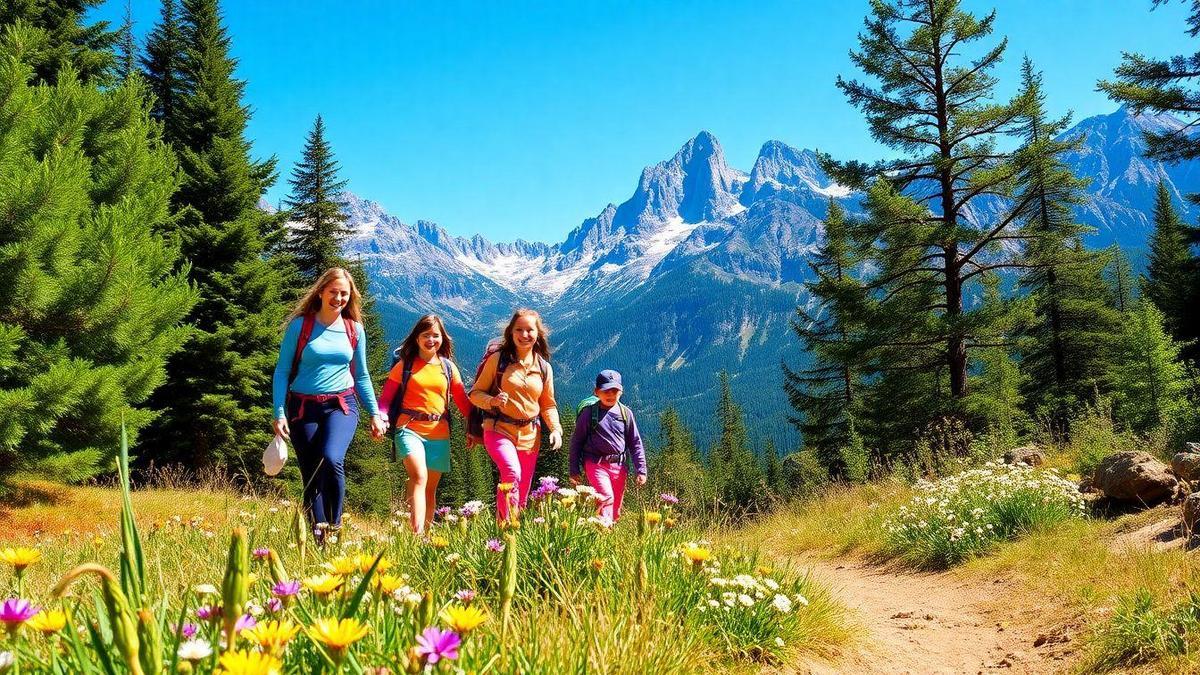
Essential Training Gear for Simulated Mountain Climbing
Must-Have Equipment for Your Home Gym
If you’re looking to climb mountains, you need the right training gear for simulated mountain climbing at home. Imagine standing at the foot of a mountain, ready to conquer it. But first, you need to prepare! Here’s a list of essential equipment to get you started:
- Climbing Wall: If you have space, a climbing wall can help you practice your moves and build strength.
- Resistance Bands: These are great for strength training and can be used for various exercises.
- Weighted Vest: Wearing a weighted vest while you train can mimic the extra weight of a climbing pack.
- Foam Roller: This helps with recovery and keeps your muscles loose after your workouts.
- Climbing Shoes: Invest in a good pair to improve your grip and footwork.
Choosing the Right Indoor Climbing Training Tools
When you’re setting up your home gym, think about what tools will support your journey. Here’s a breakdown of some popular options:
| Tool | Purpose |
|---|---|
| Hangboard | Improves finger strength |
| Pull-Up Bar | Builds upper body strength |
| Balance Board | Enhances stability and core strength |
| Cardio Equipment | Boosts endurance for long climbs |
Each piece of equipment plays a role in preparing you for the challenges ahead. It’s like building a toolbox; every tool has its purpose.
The Importance of Quality Climbing Training Gear
Quality matters. Using good gear can make a big difference in your training. Cheap equipment might break or not work well, which can lead to injuries. You want to focus on your training, not worry about your gear falling apart.
Think of your training gear as your best friend on this journey. It supports you, helps you grow stronger, and keeps you safe. Investing in quality gear means you’re investing in yourself.
Building Strength for Climbing at Home
Effective Strength Training for Climbers
Climbing is not just about reaching the top; it’s about building strength and endurance. When you’re at home, you can still work on those climbing muscles. Bodyweight exercises are fantastic. Think about push-ups, pull-ups, and squats. These moves help build the strength you need to conquer those rocky paths.
Here’s a simple routine you can try:
| Exercise | Reps | Sets |
|---|---|---|
| Push-ups | 10-15 | 3 |
| Pull-ups | 5-10 | 3 |
| Squats | 15-20 | 3 |
| Planks | 30 seconds | 3 |
This routine focuses on your upper body, core, and legs. Each part is essential for climbing. You’ll feel stronger and more ready for your next adventure.
How to Use Home Workout Equipment for Climbing
If you have some home workout equipment, you can take your training up a notch. Here are a few items that can help:
- Resistance Bands: Great for upper body strength. You can do rows or shoulder presses.
- Dumbbells: Use them for bicep curls or tricep extensions. They help build arm strength.
- Weighted Vest: Wear this during your workouts to add extra weight. It simulates carrying a backpack while climbing.
Using these tools can really boost your strength. Just remember to start light and gradually increase the weight. Your body needs time to adjust.
Tips for Creating a Climbing-Focused Workout Routine
Creating a climbing-focused workout routine at home doesn’t have to be hard. Here are some tips to get you started:
- Mix It Up: Combine strength training with cardio. Try jogging or jumping rope for a well-rounded workout.
- Set Goals: Decide what you want to achieve. Maybe you want to do more pull-ups or run longer distances.
- Stay Consistent: Aim for at least three workouts a week. Consistency is key to building strength.
- Listen to Your Body: If you feel pain, take a break. Rest is just as important as working out.
With these tips, you can create a routine that works for you. Remember, training gear for simulated mountain climbing at home can make a big difference.
Improving Endurance with Simulated Climbing
Endurance Training Techniques for Climbers
Building endurance is key when you’re climbing a mountain. You want your body to be ready for long hours of effort. Here are some great techniques to help you boost your endurance:
- Interval Training: This is when you mix short bursts of intense activity with rest. For example, sprint for 30 seconds, then walk for 1 minute. Repeat this several times.
- Long, Slow Distance (LSD): Go for a long walk or run at a steady pace. This helps your body get used to being active for a long time.
- Cross-Training: Mix in other activities like cycling, swimming, or even dancing. This keeps things fresh and works different muscles.
- Hill Repeats: Find a hill and run or walk up it several times. This mimics the effort of climbing and builds strength.
How to Incorporate Climbing Simulation Tools
Using training gear for simulated mountain climbing at home can really help you prepare. Here’s how you can use these tools effectively:
- Climbing Walls: If you have access to a climbing wall, practice regularly. It’s a fun way to build strength and endurance.
- Resistance Bands: These can help strengthen your arms and legs. Try doing exercises that mimic climbing movements.
- Stair Climbers: Use a stair climber machine to simulate the action of climbing. It’s a great way to work on your endurance.
- Weighted Vests: Wearing a weighted vest while you exercise can increase the challenge. Just make sure to start light and increase the weight gradually.
Balancing Strength and Endurance in Your Training
Finding the right mix of strength and endurance is crucial. You don’t want to be strong but lack stamina, or vice versa. Here’s a simple way to balance both:
| Training Focus | Example Activities |
|---|---|
| Strength | Weightlifting, Resistance Training |
| Endurance | Long Runs, Cycling, Swimming |
| Combination | Circuit Training, Climbing Drills |
By focusing on both strength and endurance, you’ll be ready for whatever the mountain throws your way. Remember, it’s all about consistency. Keep pushing yourself, and you’ll see improvement over time.
Safety First: Training Gear Considerations
Essential Safety Gear for Home Climbing
When you’re gearing up for simulated mountain climbing at home, safety should be at the top of your list. Here are some must-have items to keep you secure while you practice:
- Climbing Shoes: These fit snugly and give you grip on holds.
- Harness: A good harness will keep you safe and secure.
- Crash Pad: If you’re bouldering, a crash pad can soften your fall.
- Chalk: This helps keep your hands dry for better grip.
- Helmet: Protects your head from any potential falls or bumps.
How to Set Up a Safe Climbing Environment
Creating a safe climbing space at home is crucial. Here’s how you can do that:
- Choose the Right Location: Pick a spot with enough space and no sharp objects around.
- Install Proper Holds: Use holds that are suitable for your skill level and securely attach them.
- Use Padding: Place mats or soft surfaces under your climbing area to cushion any falls.
- Check Equipment Regularly: Make it a habit to inspect your gear for wear and tear.
Understanding the Risks of Indoor Climbing Training
Indoor climbing can be fun, but it’s not without its risks. Here are some things to keep in mind:
- Falling: Even indoors, falls can happen. Always be cautious.
- Overexertion: Know your limits. Pushing too hard can lead to injuries.
- Equipment Failure: Regularly check your gear to avoid accidents.
| Risk Factor | Description | Prevention Tips |
|---|---|---|
| Falling | Accidental slips or missteps | Use crash pads and practice falling techniques |
| Overexertion | Pushing beyond your physical limits | Listen to your body and take breaks |
| Equipment Failure | Gear breaking or malfunctioning | Regular inspections and maintenance |
The Role of Flexibility in Climbing Training
Stretching Exercises for Climbers
When you think about climbing, you might picture steep rocks and breathtaking views. But did you know that flexibility plays a huge role in your climbing success? Stretching exercises are key to keeping your body limber and ready for action. Here are a few stretches you can try:
- Hamstring Stretch: Sit on the ground and reach for your toes. This helps your legs stay flexible.
- Shoulder Stretch: Pull one arm across your body and hold it with the other arm. This keeps your shoulders loose.
- Hip Flexor Stretch: Kneel on one knee and push your hips forward. This opens up your hips for better movement.
These stretches can help you feel more comfortable and confident as you climb.
How Flexibility Affects Your Climbing Performance
Flexibility isn’t just about being able to touch your toes. It can greatly influence your climbing skills. When you are flexible, you can reach for holds more easily. You also reduce the risk of injury, which is a big plus. Here’s how flexibility makes a difference:
| Benefit | Description |
|---|---|
| Improved Reach | You can stretch further to grab holds. |
| Better Balance | Your body can adjust more easily on uneven surfaces. |
| Reduced Injury Risk | Flexible muscles are less likely to strain or tear. |
Think of flexibility as the oil that keeps the gears of your climbing machine running smoothly. The more flexible you are, the better you climb!
Incorporating Flexibility Training into Your Routine
Adding flexibility training to your routine doesn’t have to be hard. You can start with just a few minutes each day. Here’s how you can make it work:
- Set a Schedule: Pick a time that works for you, like before or after your climbing sessions.
- Stay Consistent: Try to stretch at least 3 times a week. This builds a habit.
- Mix It Up: Use different stretches to keep things fun and interesting.
By making flexibility training a part of your daily life, you’ll notice improvements in your climbing. You’ll feel more agile and ready to tackle those challenging routes.
Tracking Progress in Your Climbing Journey
Tools to Monitor Your Climbing Training Progress
Keeping track of your climbing progress is like having a map on a long journey. It helps you see how far you’ve come and what you need to work on. Here are some tools you can use to keep an eye on your climbing training:
- Climbing Apps: There are many apps available that let you log your climbs, set goals, and track your progress.
- Journals: Writing down your climbs, feelings, and what you learned can be very helpful. It’s a great way to reflect on your journey.
- Fitness Trackers: These gadgets can monitor your heart rate, calories burned, and even your climbing routes.
Using these tools can help you stay motivated and focused on your climbing goals.
Setting Goals for Your Home Climbing Practice
Setting goals is like planting seeds for your climbing success. You want to make sure they are clear and achievable. Here’s how to set effective goals for your home climbing practice:
- Be Specific: Instead of saying, I want to climb better, try, I want to climb a 5.10 route.
- Make Them Measurable: Decide how you will measure your progress. For example, I will practice for 30 minutes, three times a week.
- Set a Time Frame: Give yourself a deadline. For example, I want to reach my goal in three months.
Celebrating Milestones in Your Climbing Training
Every step you take in your climbing journey deserves to be celebrated. Recognizing your achievements can boost your spirits and keep you moving forward. Here are some ways to celebrate:
- Share with Friends: Tell your friends about your climbing successes. Their support can make you feel proud.
- Treat Yourself: After reaching a goal, reward yourself with something special, like new climbing gear or a fun outing.
- Reflect on Your Journey: Take a moment to think about how far you’ve come. This reflection can help you appreciate your hard work.
| Milestone | Celebration Idea |
|---|---|
| First 5.9 Climb | Share on social media |
| Climbing 3x a Week | Buy a new piece of gear |
| Completing a Route | Plan a climbing trip with friends |
Frequently Asked Questions
What is the best training gear for simulated mountain climbing at home?
You will need a few essentials. Look for a sturdy climbing wall or DIY holds. A good pair of climbing shoes is key. Don’t forget a crash pad for safety!
Can I use regular gym equipment for mountain climbing training?
Yes, you can! Weights, resistance bands, and a pull-up bar work well. They help build strength, which is important for climbing.
How long should I train with my gear at home?
Aim for at least 30 minutes to an hour per session. Regular practice helps improve your skills. A few times a week is just right!
Is it safe to train alone at home?
Be cautious. Always have safety gear like mats or pads. If possible, train with a buddy for an extra layer of safety.
Where can I find training gear for simulated mountain climbing at home?
Check online stores, local sports shops, or climbing gyms. You may find great deals on used gear too!


